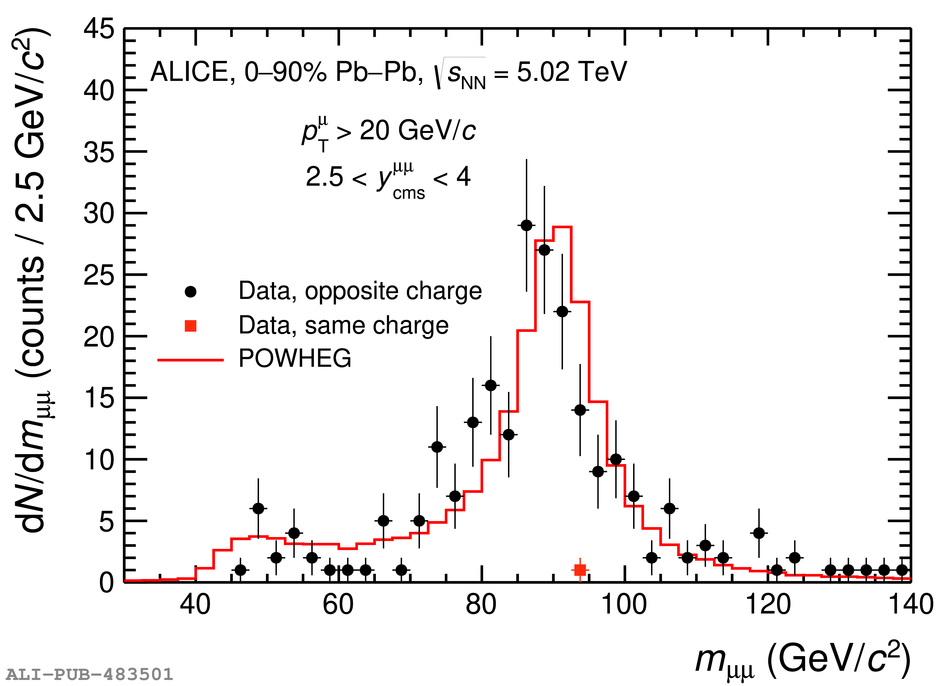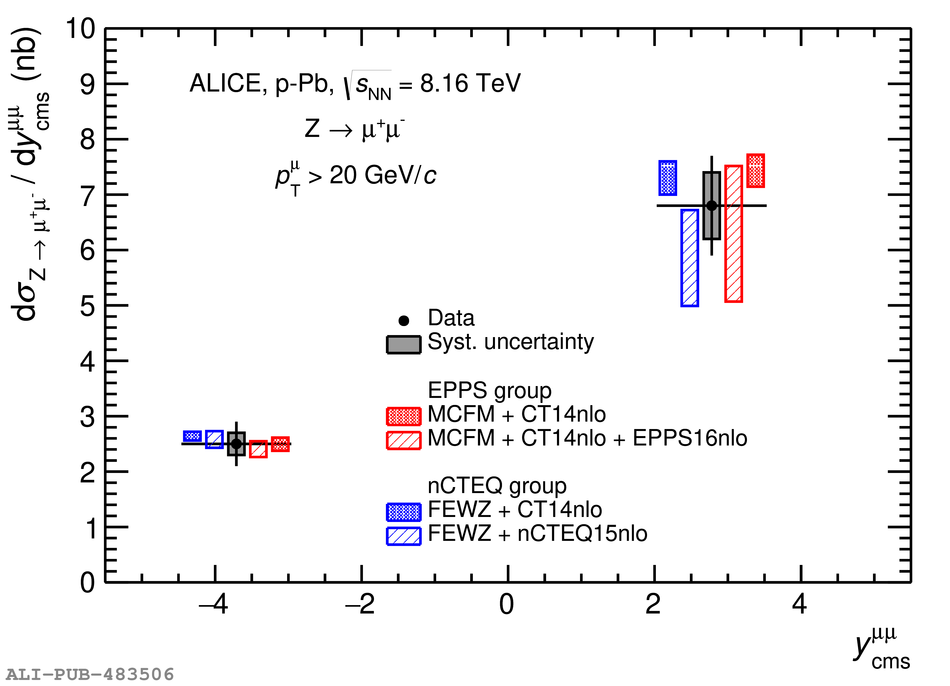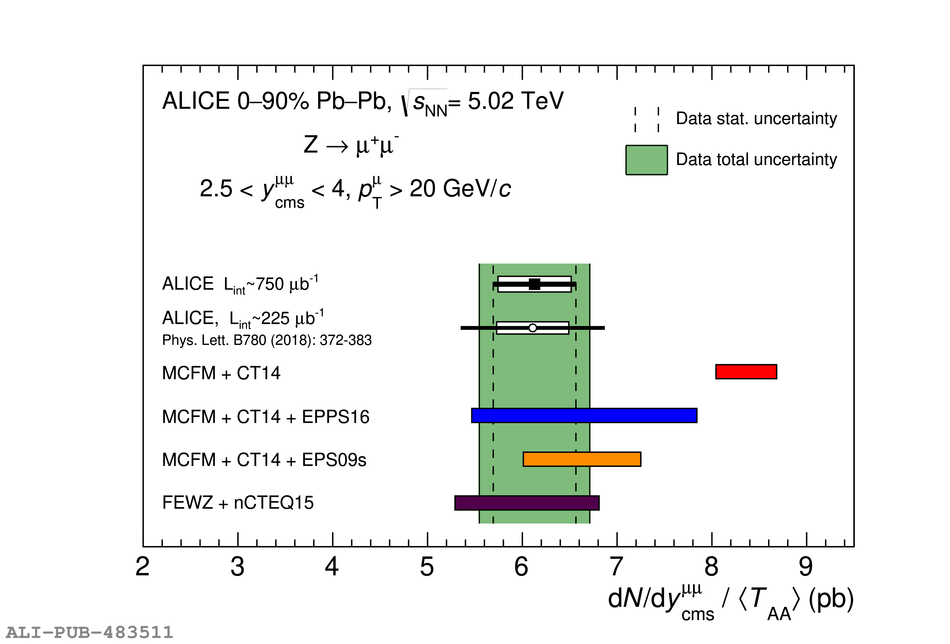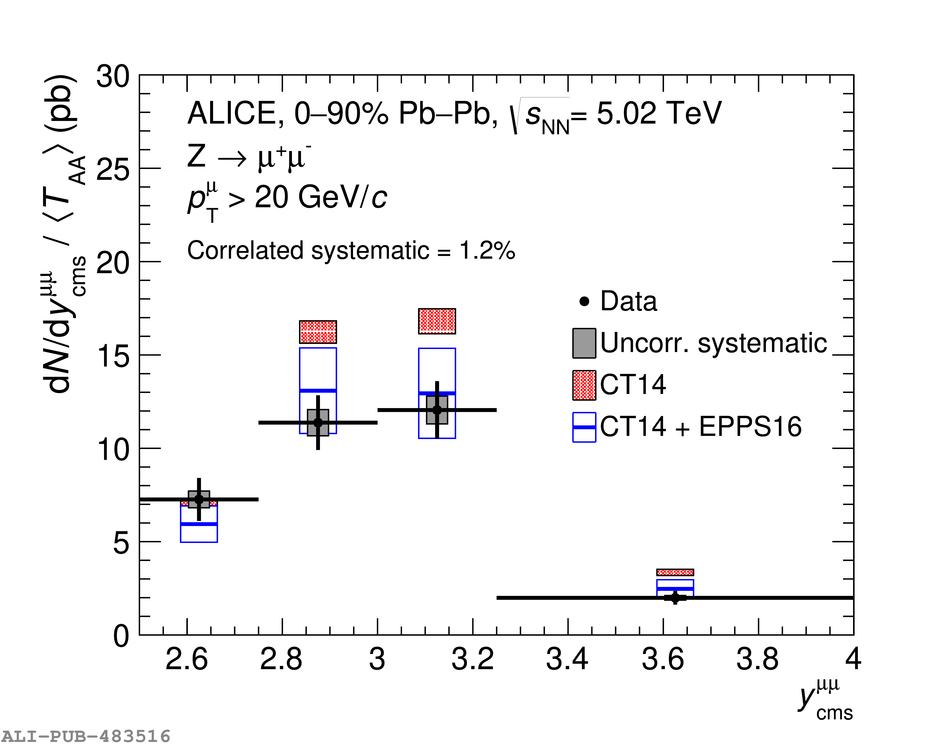Measurement of Z-boson production in p-Pb collisions at $\sqrt{s_{\mathrm{NN}}}=8.16$ TeV and Pb-Pb collisions at $\sqrt{s_{\mathrm{NN}}}=5.02$ TeV is reported. It is performed in the dimuon decay channel, through the detection of muons with pseudorapidity $-4 <~ \eta_{\mu} <~ -2.5$ and transverse momentum $p_{\rm T}^{\mu} > 20$ GeV/$c$ in the laboratory frame. The invariant yield and nuclear modification factor are measured for opposite-sign dimuons with invariant mass $60 <~ m^{\mu\mu} <~ 120$ GeV$c^2$ and rapidity $2.5 <~ y_{cms}^{\mu\mu} <~ 4$. They are presented as a function of rapidity and, for the Pb-Pb collisions, of centrality as well. The results are compared with theoretical calculations, both with and without nuclear modifications to the Parton Distribution Functions (PDFs). In p-Pb collisions the center-of-mass frame is boosted with respect to the laboratory frame, and the measurements cover the backward ($-4.46<~ y_{cms}^{\mu\mu}<~-2.96$) and forward ($2.03<~ y_{cms}^{\mu\mu}<~3.53$) rapidity regions. For the p-Pb collisions, the results are consistent within experimental and theoretical uncertainties with calculations that include both free-nucleon and nuclear-modified PDFs. For the Pb-Pb collisions, a $3.4\sigma$ deviation is seen in the integrated yield between the data and calculations based on the free-nucleon PDFs, while good agreement is found once nuclear modifications are considered.
JHEP 2009 (2020) 076
HEP Data
e-Print: arXiv:2005.11126 | PDF | inSPIRE
CERN-EP-2020-090
Figure group








